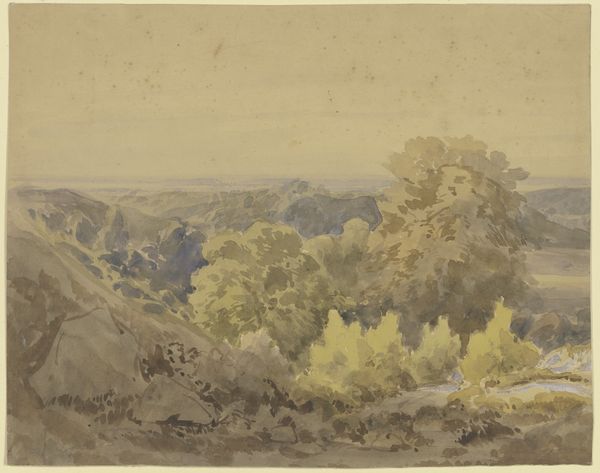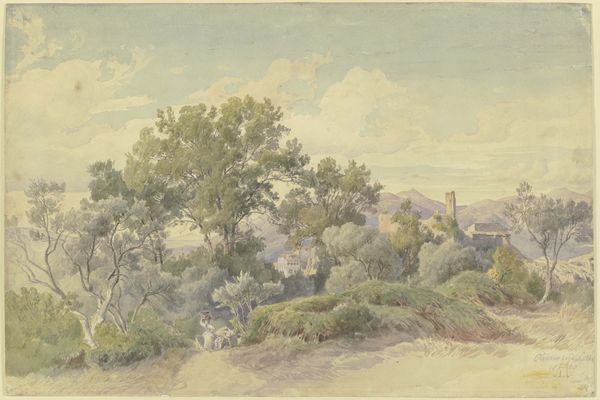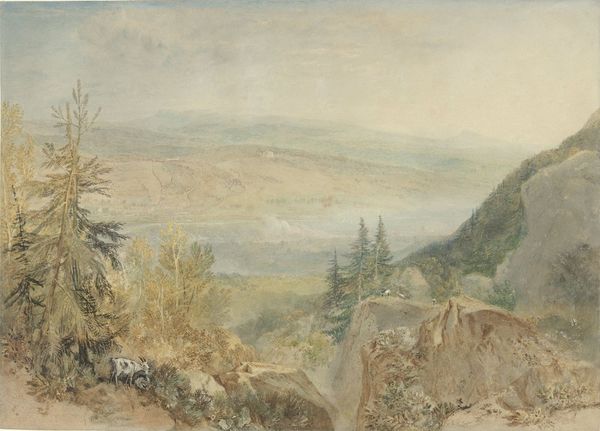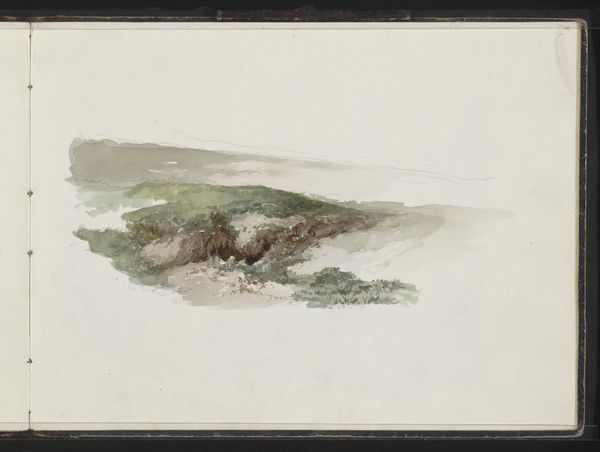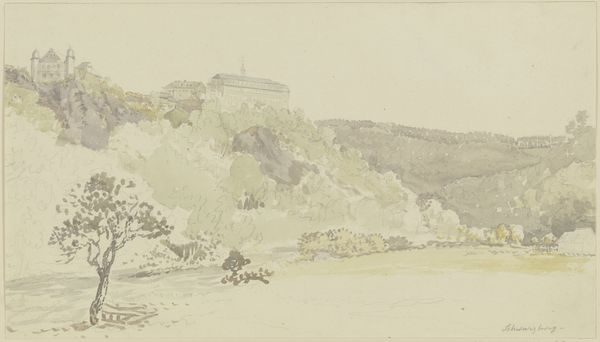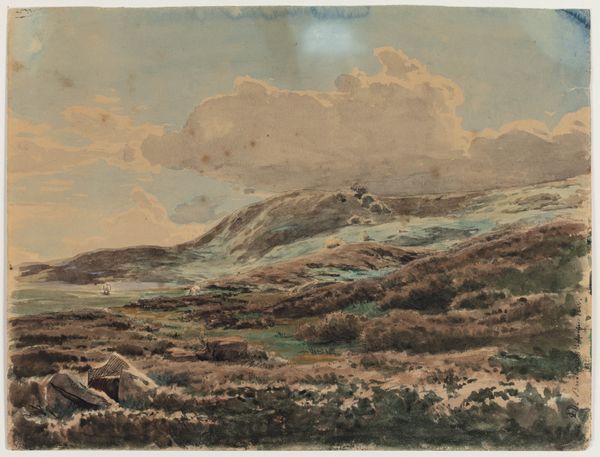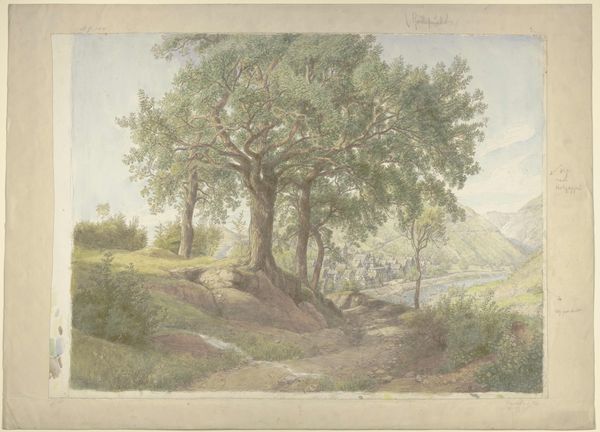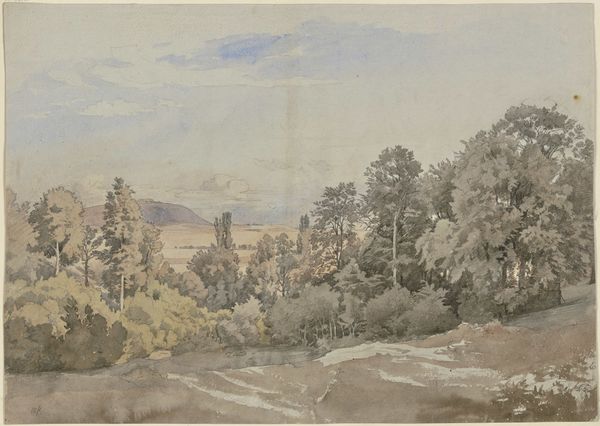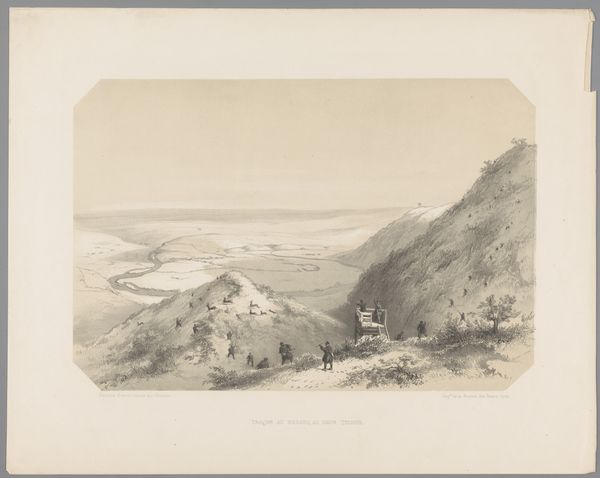
drawing, plein-air, paper, watercolor, inorganic-material, chalk, pastel, black-chalk
#
drawing
#
plein-air
#
landscape
#
paper
#
oil painting
#
watercolor
#
inorganic-material
#
romanticism
#
chalk
#
watercolour illustration
#
pastel
#
black-chalk
#
watercolor
Dimensions: 246 × 365 mm
Copyright: Public Domain
Editor: This is Samuel Palmer’s “View from Wilmots Hill, Kent,” likely created between 1830 and 1835 using watercolor, chalk, and black chalk. The muted tones give it such a peaceful, almost dreamlike quality. What catches your eye about this work? Curator: The apparent ease of this drawing belies the labor involved, doesn't it? Palmer carefully combined different drawing materials on paper – watercolor washes likely laid first, then the texture built with chalk and possibly pastel. What's interesting to me is how the perceived "naturalness" of the view is entirely constructed through this artistic *process*. It invites questions: Where did he source his materials? How did the production and distribution of these papers, chalks and pigments shape Palmer's access and his art? Editor: That’s an interesting point. I hadn't considered how access to these materials influenced his landscape rendering. So, the "view" isn't just a simple observation? Curator: Precisely. Consider the social context. What did it *mean* to make landscapes at this particular moment, as the English countryside underwent rapid industrial change? These picturesque scenes, carefully rendered with artisanal materials, can be seen as both a celebration of and an escape from a changing social reality. Editor: I see what you mean! It's not just a pretty landscape; it's Palmer's commentary using materials rooted in a specific time. Curator: Exactly. The material reality and artistic creation are intertwined with socioeconomic forces. Palmer is using these methods and material during the Industrial Revolution to present an ideal of the rural English landscape. It is the exact same methods that allowed for increased commodification of landscape prints that worried some of his contemporaries! Editor: That's a perspective shift for me. I'll definitely look at landscapes differently now! Curator: I am glad! Next time you visit landscape works, think about the means of production – it will unlock whole new meanings in them.
Comments
No comments
Be the first to comment and join the conversation on the ultimate creative platform.




